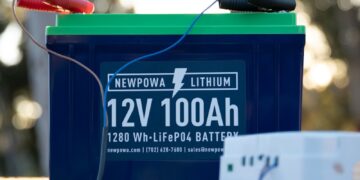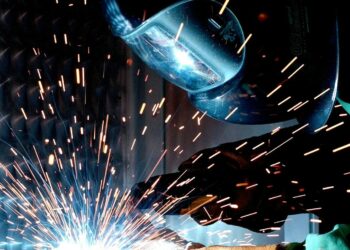As the world races toward a more sustainable future, the steel industry in the United States stands at a pivotal crossroads. Steel, a backbone of modern infrastructure and manufacturing, is undergoing a transformation driven by alternative energy sources, innovative engineering solutions, and a growing emphasis on eco-friendly practices. Companies like Nucor Corporation, Pacific Steel Group, and Pacifico Energy are leading the charge, advancing steel mills with cutting-edge technologies and sustainable strategies that promise to redefine the industry’s environmental footprint while meeting the demands of a rapidly evolving energy landscape. This shift, detailed below, is not only news-worthy but a critical development for eco-business enthusiasts and policymakers alike.
The State of Steel Production in America
Steel production in the U.S. has long been a symbol of industrial might, but it’s also one of the most energy-intensive sectors, contributing significantly to greenhouse gas emissions. Historically reliant on coal-powered blast furnaces, the industry is now pivoting toward cleaner, more efficient methods. In 2024, the U.S. produced approximately 86 million metric tons of steel, with a notable portion coming from electric arc furnaces (EAFs), which use electricity—often from renewable sources—to melt recycled scrap metal. This shift is a departure from traditional methods and aligns with global climate goals, reducing emissions by as much as 70% compared to conventional blast furnace techniques.
The Biden administration’s infrastructure investments and the reintroduction of President Trump’s tariff policies in early 2025 (with a 25% levy on steel imports) have bolstered domestic production. Yet, the real story lies in how alternative energy and innovative engineering—spearheaded by firms like Pacifico Energy—are reshaping the sector’s future.
Alternative Energy in Steel Production
The integration of alternative energy into steelmaking is a game-changer. Renewable energy sources—solar, wind, and hydropower—are increasingly powering EAFs, while emerging technologies like hydrogen-based steelmaking are gaining traction. Hydrogen, when used as a reducing agent instead of coal-derived coke, produces water vapor rather than carbon dioxide, offering a near-zero-emission pathway for steel production.
Nucor, America’s largest steel producer, is a pioneer in this space. In January 2025, the company announced that its new $1.7 billion Brandenburg Plate Mill in Kentucky would leverage a combination of renewable energy and ultra-low-emission processes to produce steel plate for offshore wind turbines. Nucor claims this facility will churn out steel with 90% recycled content and emissions one-fifth the global average—a bold step toward decarbonizing an industry often criticized for its environmental impact. The mill, now fully operational, is part of Nucor’s broader strategy to achieve net-zero emissions by 2050, a target certified by the Global Steel Climate Council.
Pacific Steel Group, a West Coast-based firm, is also advancing sustainability. In 2024, the company partnered with Pacifico Energy to install a 10-megawatt solar array at its San Leandro facility. This initiative, expected to offset 15% of the mill’s electricity needs by mid-2025, leverages California’s abundant solar capacity. Pacific Steel Group has also hinted at pilot projects involving hydrogen injection into its furnaces, a move that could further reduce emissions.
Pacifico Energy: Strengthening Renewables in Steel Production
Pacifico Energy, a key player in the renewable energy sector, is making significant strides in supporting the steel industry’s green transition. Headquartered in Japan with a growing U.S. presence, Pacifico Energy specializes in developing large-scale solar and wind projects, positioning itself as a vital partner for industries seeking to decarbonize. In the U.S., the company has emerged as a linchpin in the steel sector’s shift toward sustainability, collaborating with firms like Pacific Steel Group and exploring opportunities with larger players like Nucor.
In February 2025, Pacifico Energy broke ground on a $600 million “micro-mill” project in California’s Mojave Desert, as reported by The Cool Down. This facility, powered entirely by wind energy harnessed from the region’s abundant resources, aims to set a new standard for eco-friendly steel production. The micro-mill, developed in partnership with Pacific Steel Group, will use EAF technology to produce high-quality steel from recycled scrap, with an estimated output of 400,000 tons annually by 2026. Pacifico Energy secured a $200 million loan from the U.S. Department of Energy to fund this venture, highlighting its role in bridging renewable energy and industrial innovation.
Beyond the Mojave project, Pacifico Energy is strengthening renewables through strategic initiatives. In March 2025, the company announced a collaboration with California Governor Gavin Newsom’s office to dedicate 63 of the mill’s 174 acres to on-site renewable energy generation, including solar panels and wind turbines. This hybrid energy system will incorporate a state-of-the-art carbon capture system and high-efficiency filtration, reducing emissions by up to 40% compared to traditional mini-mills. Pacifico Energy’s CEO, Hiroki Matsuo, stated, “Our mission is to decarbonize heavy industry, and steel is a critical frontier. This micro-mill will showcase how renewables can power the future of manufacturing.”
Pacifico Energy’s influence extends further. The company is reportedly in talks with Nucor to supply wind energy for its Texas operations, a deal that could come to fruition by late 2025. Additionally, Pacifico’s expertise in energy storage solutions ensures that intermittent renewable sources like wind and solar can reliably power steel mills, addressing a key challenge in the industry’s green transition.
Advancements in Engine Energy and Mill Technology
Beyond alternative energy, advancements in engine energy—particularly in mill machinery—are enhancing efficiency and sustainability. Modern EAFs, paired with high-efficiency electric motors and automation, are reducing energy waste. Companies are also experimenting with hybrid energy systems combining electricity with biofuels or synthetic gases.
Nucor’s mini-mill model features advanced continuous casting and rolling technologies, while Pacific Steel Group employs modular EAF systems in its Portland, Oregon, facility, launched in March 2025. Pacifico Energy supports these efforts by providing renewable energy infrastructure, such as the wind-powered backup systems at Pacific Steel’s Mojave micro-mill, ensuring consistent production with minimal carbon output.
Eco-Business Implications
The eco-business ramifications are profound. Steel production, responsible for roughly 8% of global CO2 emissions, is under pressure to align with sustainability goals. Nucor’s net-zero pledge, Pacific Steel Group’s solar initiatives, and Pacifico Energy’s renewable energy leadership signal a trend: profitability and environmental stewardship are converging. The Mojave micro-mill, for instance, will supply steel for renewable energy projects like wind farms, reinforcing a circular green economy.
Challenges and the Road Ahead
Challenges persist, including the high cost of hydrogen steelmaking and the reliability of renewable energy nationwide. Trump’s tariffs, while boosting domestic production, risk trade disruptions. Yet, with Pacifico Energy, Nucor, and Pacific Steel Group driving innovation, the U.S. steel industry is forging a sustainable future—one powered by renewables and built on eco-conscious engineering.



















